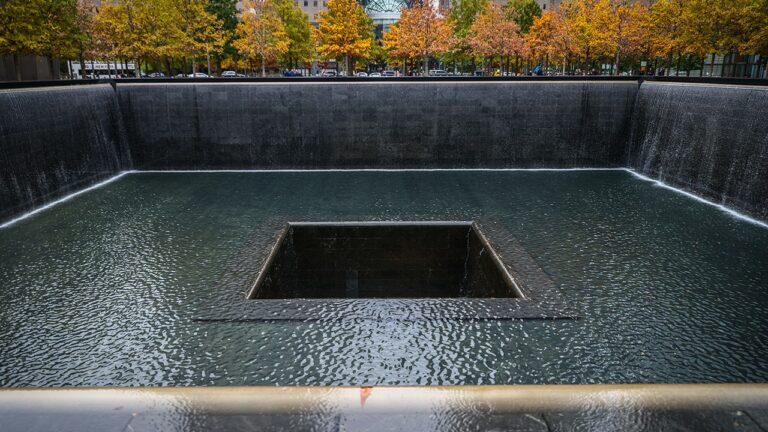Honoring 9/11: Memorials and Museums Across America
In the heart of the United States, there stand memorials and museums as solemn reminders of the tragic events that unfolded on September 11, 2001. These hallowed places pay tribute to the thousands of lives lost and the unwavering heroism displayed in the face of terror. Spread throughout the nation, there are over a thousand 9/11 memorials, with a concentration in New York, New Jersey, and Connecticut.
Over the years since that fateful day, several poignant memorials and museums have been erected, allowing visitors to pay their respects and gain insight into this pivotal moment in history. Here are a few of them:
1. 9/11 Memorial & Museum in New York City
Every year, millions of people visit the 9/11 Memorial in New York City to remember and learn about the shocking events of September 11, 2001. The memorial honors the 2,977 people who lost their lives during the attacks at the World Trade Center, near Shanksville, Pennsylvania, and at the Pentagon, including those who perished in the World Trade Center bombing in 1993.
The heart of this memorial comprises two serene pools engraved with the names of the victims, marking the exact spots where the twin towers once stood. The North Pool bears the names of those lost in the North Tower, the 1993 bombing, and hijacked Flight 11. The South Pool displays the names of first responders, South Tower victims, and those on hijacked Flights 93, 77, and 175, along with those who died at the Pentagon.
Surrounding these pools are more than 400 swamp oak trees, native to the crash sites, and the resilient Survivor Tree, a Callery Pear Tree discovered at Ground Zero in 2001. The 9/11 Memorial Glade pays tribute to those who suffered illnesses and lost their lives due to post-attack toxins.
The 9/11 Museum, opened in 2014, offers a deeper understanding of the 9/11 history and the 1993 World Trade Center bombing through its exhibits, including historic remnants like the Survivors’ Stairs and the Last Column.
2. Flight 93 National Memorial, Shanksville, Pennsylvania
The Flight 93 National Memorial stands at the site where United Airlines Flight 93 crash-landed. This flight, hijacked by terrorists, was bound for Washington D.C., with plans to target the U.S. Capitol. Passengers and crew valiantly fought back, leading the hijackers to crash the plane in a Pennsylvania field, saving countless lives.
The memorial includes a visitor center and an exhibition. Notable within it is the Tower of Voices, a 93-foot structure adorned with 40 wind chimes, symbolizing each life lost on Flight 93.
3. Postcards in Staten Island
“Postcards” is a unique 9/11 memorial created by Masayuki Sono. The two fiberglass structures resemble folded postcards and bear granite plaques inscribed with the names of Staten Island residents who lost their lives during the 9/11 attacks. It also includes a plaque honoring a Staten Island resident who perished in the 1993 World Trade Center bombings.
4. 9/11 Memorial Labyrinth at Boston College
Labyrinths have served as spaces for meditation and reflection for centuries. The Memorial Labyrinth at Boston College in Chestnut Hill, Massachusetts, follows this tradition. Since its inauguration on September 11, 2003, it has provided a place for peace and prayer while also memorializing the 22 Boston College alumni who were lost on 9/11.
5. The Pentagon Memorial, Arlington, Virginia
Located just outside the Pentagon, this memorial pays tribute to the 184 individuals who lost their lives at the Pentagon and on American Airlines Flight 77. Each memorial unit features a bench above a small pool of water that reflects light at night. The units are organized by age and distinguish between those on the plane and victims at the Pentagon.
These memorials and museums stand as symbols of remembrance, ensuring that the events of September 11, 2001, and the lives lost will never be forgotten. They offer a place to reflect, honor, and gain a deeper understanding of this critical chapter in American history.

